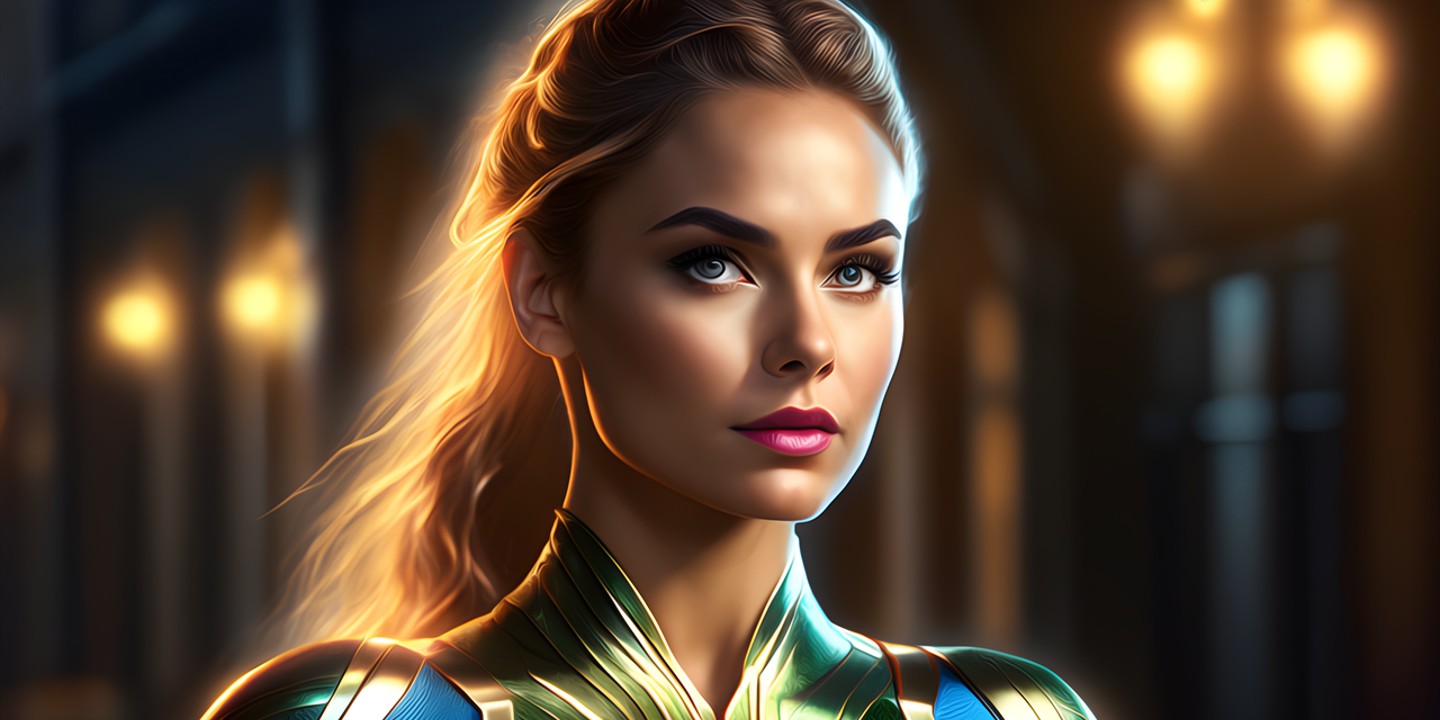Phasers Or Sabers—Choose Your Side
Some rivalries define fandoms, but few spark more debate than the clash between Star Trek and Star Wars. Both shaped generations of sci-fi fans with unforgettable characters and visionary storytelling. Yet fans still argue over which universe is better. To settle the score, we’ve gathered a set of compelling arguments (from both sides) that deserve some strong consideration. Let’s begin with 10 reasons Trekkies stand by Star Trek over Star Wars.
1. Utopian Federation Vision
Gene Roddenberry, the creator, imagined the United Federation of Planets as a society free from poverty, where replicators instantly produced food or objects. Diversity and cooperation shaped his vision, inspiring inclusivity in real life. In contrast, Star Wars presented a galaxy fractured by wars and lingering feudal systems.
 Why EARTH is the HOME of the UFP? by Certifiably Ingame
Why EARTH is the HOME of the UFP? by Certifiably Ingame
2. Scientific Exploration Mission
While Star Wars revolves around rebellion and war, Star Trek begins with exploration. Starfleet’s mission is to discover new worlds, guided by the motto “to boldly go.” Roddenberry’s vision even influenced NASA, and scientists studying exoplanets frequently reference Star Trek in their research papers.
 Star Trek: Starfleet Academy | First Look Teaser | Paramount+ by Paramount Plus
Star Trek: Starfleet Academy | First Look Teaser | Paramount+ by Paramount Plus
3. Diverse Multispecies Crew
From Spock the Vulcan to Worf the Klingon, Star Trek gave alien characters leading roles and modeled collaboration between species. By contrast, Star Wars placed humans at the center and featured fewer nonhuman characters with meaningful screen presence.
4. Consistent Galactic Lore
Fans of Star Trek rely on detailed guides, technical manuals, and in-universe explanations to keep its galaxy consistent. Hundreds of species and planets are meticulously documented. Meanwhile, Star Wars continually revises its canon, with new films and spinoffs often reshaping or rewriting previously established history.
 Star Trek TNG -- Replicators by Frustrated Idealist
Star Trek TNG -- Replicators by Frustrated Idealist
5. Explores Social Issue
Star Wars tells sweeping adventures, but Star Trek leaned on allegory to mirror real society. The episode Let That Be Your Last Battlefield highlighted racism, and the Ferengi poked at unchecked capitalism. Through science fiction, it pushed viewers to confront problems they already recognized on Earth.
 Star Trek -- Beale vs Lokai (Part 5 of 5) by Frustrated Idealist
Star Trek -- Beale vs Lokai (Part 5 of 5) by Frustrated Idealist
6. Plausible Scientific Technology
Warp drives and tricorders in Star Trek were rooted in genuine scientific ideas. These concepts inspired real devices like iPads, virtual reality, and prototype tricorder scanners. Star Wars, on the other hand, favored fantasy technology such as lightsabers and hyperdrives with little connection to real science.
 Star Trek (2009) - Arriving at Space Dock by DaEpicStorm
Star Trek (2009) - Arriving at Space Dock by DaEpicStorm
7. Real-Time Language Evolution
Star Trek didn’t just invent alien languages—it nurtured them. Klingon became a fully developed language with grammar, syntax, and even Shakespeare translations. Fans speak it fluently, and linguists study it seriously. Star Wars created iconic sounds and phrases, but Star Trek built entire linguistic ecosystems that evolved with the franchise.
 Star Trek Into Darkness - Khan Attacks and Obliterates Klingons by Prometheus of Videos
Star Trek Into Darkness - Khan Attacks and Obliterates Klingons by Prometheus of Videos
8. Team-Based Crew Dynamics
Poker nights aboard the Enterprise symbolized trust, and Kirk’s friendship with Spock became iconic. These relationships showed how Star Trek thrived on teamwork. By comparison, Star Wars often highlighted the lone hero—the one pilot, Jedi, or warrior expected to change the galaxy almost single-handedly.
 Swarm ships tears the Enterprise apart | Star Trek Beyond | CLIP by Boxoffice Movie Scenes
Swarm ships tears the Enterprise apart | Star Trek Beyond | CLIP by Boxoffice Movie Scenes
9. Commanders Rely On Reason—Not Emotions
Starfleet captains like Jean-Luc Picard and Benjamin Sisko valued diplomacy, negotiation, and calm reasoning in crises. Their choices reflected discipline and foresight. On the other hand, Luke Skywalker and other Star Wars heroes often acted impulsively, letting emotions steer decisions with unpredictable results.
 Prove To The Court That I Am Sentient by tjwparso
Prove To The Court That I Am Sentient by tjwparso
10. Time Travel As An Ethical Dilemma
Star Trek used time travel not just for spectacle, but to explore moral consequences. Whether it was saving whales in The Voyage Home or debating interference in City on the Edge of Forever, time travel became a lens for ethical storytelling. Star Wars barely touches the concept, and never with this level of philosophical depth.
 Star Trek Voyage Home: Whale song by Tatiana Kamaeva
Star Trek Voyage Home: Whale song by Tatiana Kamaeva
Of course, not every galaxy shines the same way—now it’s time to see why Star Wars holds advantages of its own
1. Epic Hero’s Journey
Unlike Star Trek’s ensemble approach, Star Wars followed the mythic hero’s journey shaped by Joseph Campbell’s monomyth. Lucas even studied anthropology to build Luke Skywalker’s arc. His path mirrored ancient epics like Gilgamesh and set the template for countless modern adventure films.
 Empire Strikes Back Yoda Training Luke part 1 (HD) by Jon Mercano
Empire Strikes Back Yoda Training Luke part 1 (HD) by Jon Mercano
2. Mythic Force Concept
The Force blended spirituality and mysticism, drawing from Taoism and Zen-like practices. Its presence shaped destinies and anchored Star Wars’ storytelling. Unlike Star Trek’s science-driven plots, this fantasy element added timeless resonance, with “May the Force be with you” becoming a phrase recognized worldwide.
 STAR WARS: How Taoism Inspired The Force by Owen Likes Comics
STAR WARS: How Taoism Inspired The Force by Owen Likes Comics
3. Iconic Lightsaber Battles
Star Trek relied on distant phaser blasts, but Star Wars brought combat face-to-face through lightsabers. These duels carried raw emotion, with Ewan McGregor training in kendo to feel like Obi-Wan. Even the weapon’s signature hum—born from a broken TV—became an unforgettable part of cinema history.
4. Memorable Antagonists
Darth Vader’s breathing, crafted from a scuba regulator, and Palpatine’s Ming-inspired appearance made the villains unforgettable. Star Wars excelled at presenting menacingly uncompromising foes. Star Trek, by contrast, often wrote antagonists who sought redemption, leaving its rogues less terrifying.
 Best Of Darth Vader's Lines In Star Wars Movies (Rogue One Included) by Darth Darcane
Best Of Darth Vader's Lines In Star Wars Movies (Rogue One Included) by Darth Darcane
5. Visual Iconography That Transcends Fandom
Stormtrooper helmets, X-wings, and Darth Vader’s silhouette are instantly recognizable—even to people who’ve never seen the films. Star Wars mastered visual branding, turning props and costumes into cultural symbols. Star Trek uniforms and ships are beloved by fans, but Star Wars imagery dominates global pop culture.
 Stormtroopers, but They're ACCURATE by Corridor Digital
Stormtroopers, but They're ACCURATE by Corridor Digital
6. Iconic Musical Score
Star Trek offered varied scores for television, but Star Wars became inseparable from John Williams’ orchestral sound. The London Symphony Orchestra’s recordings gave the saga themes like the “Imperial March.” These instantly recognizable compositions remain among the most covered film scores ever written.
7. Smuggler Underworld Culture
Star Wars ventured into criminal worlds where smugglers, bounty hunters, and gangsters thrived. Jabba’s sluglike design, the Quechua-inspired Huttese language, and Boba Fett’s following added grit. Star Trek rarely explored such underworld intrigue in the same colorful or dangerous fashion.
 Jabba the Hutt Scenes (Ep 1, Clone Wars, 4, 6) by Journal of the Whills
Jabba the Hutt Scenes (Ep 1, Clone Wars, 4, 6) by Journal of the Whills
8. Droid Character Charm
C-3PO, inspired by a 1920s film robot, and R2-D2, whose beeps came from Ben Burtt’s designs, gave Star Wars warmth and humor. Unlike Star Trek’s thoughtful android Data, these droids felt playful, becoming beloved personalities while still central to driving the story forward.
 Star Wars: A New Hope - Luke Skywalker Meets R2-D2 and C-3PO [CLIP] | TNT by TNT
Star Wars: A New Hope - Luke Skywalker Meets R2-D2 and C-3PO [CLIP] | TNT by TNT
9. The Falcon Is A Better Ship Than Any Enterprise
The Millennium Falcon wasn’t just a starship—it was a character in its own right. Fast, scrappy, and instantly recognizable, it carried unmatched charm. Star Trek’s Enterprises felt sleek and noble, but none matched the Falcon’s raw personality and cultural impact.
 Star Wars millennium falcon by jimmyc@ILU
Star Wars millennium falcon by jimmyc@ILU
10. Created A Global Franchise
From animated series to blockbuster films and bestselling games, Star Wars expanded far beyond its original trilogy. Its reach defined pop culture for decades. Star Trek achieved influence mainly through television, while Star Wars created a multigenerational universe spanning every medium imaginable.
 Binary sunset... from A New Hope, Star Wars: The Digital Movie Collection by Star Wars UK
Binary sunset... from A New Hope, Star Wars: The Digital Movie Collection by Star Wars UK











